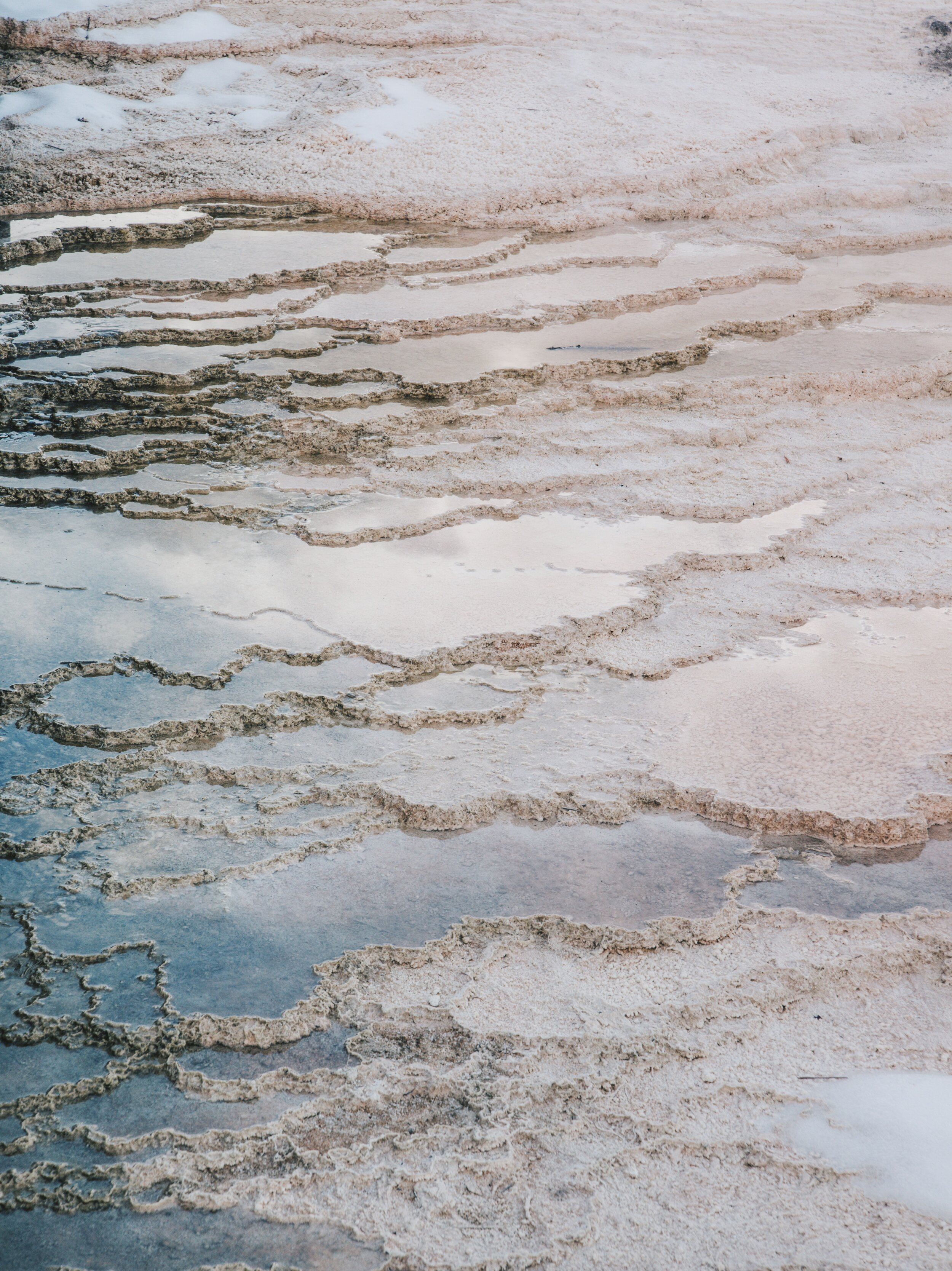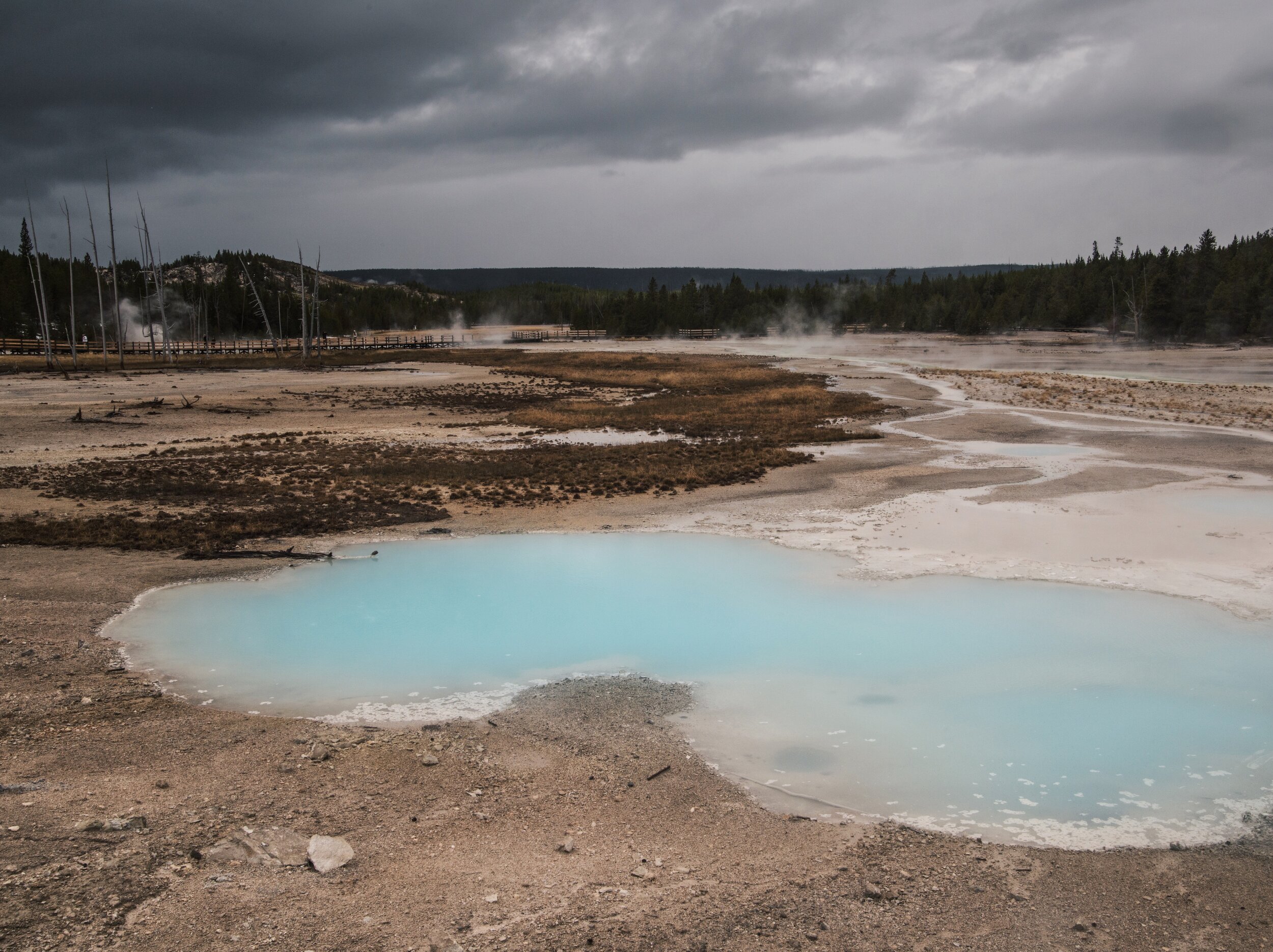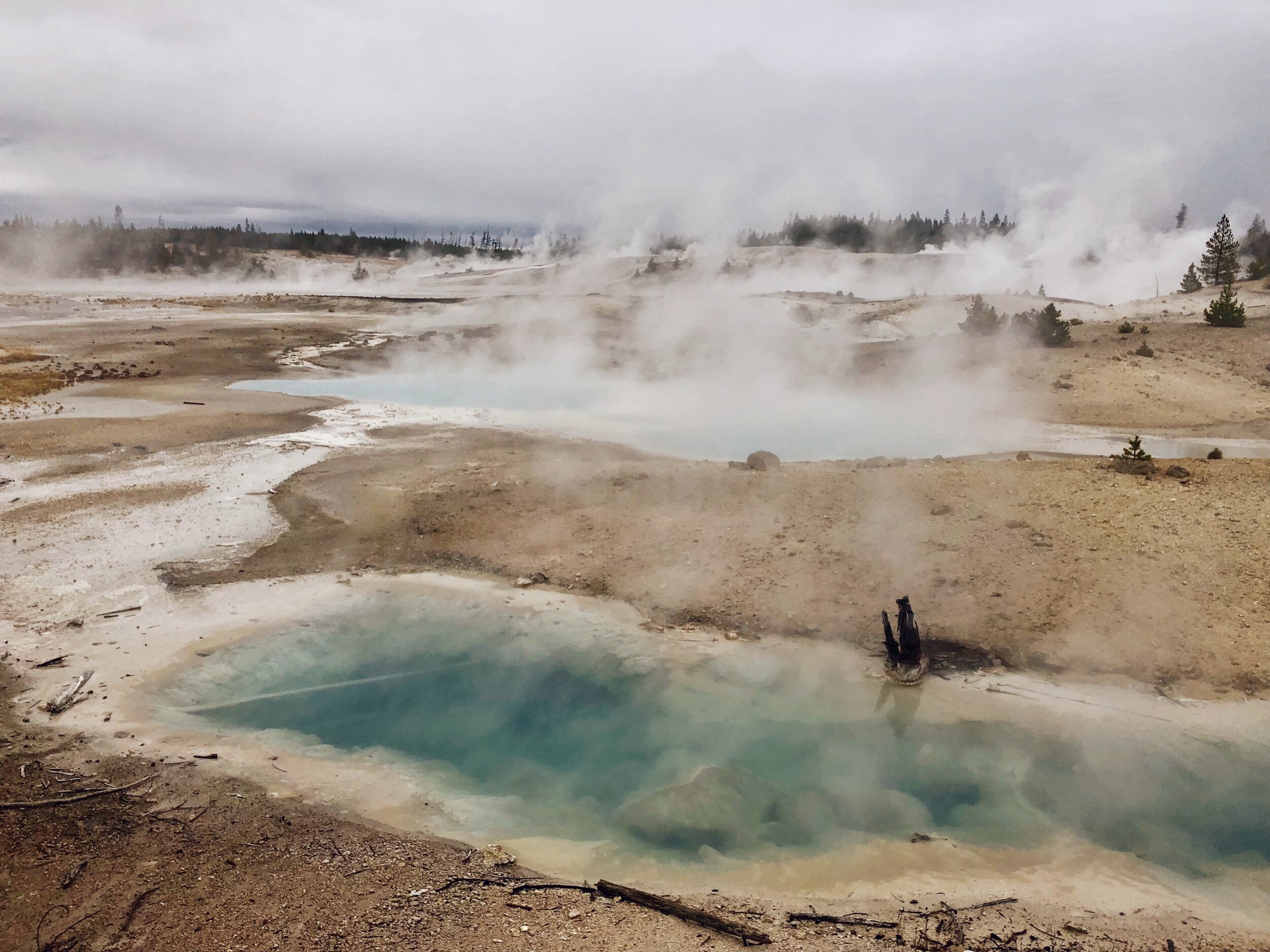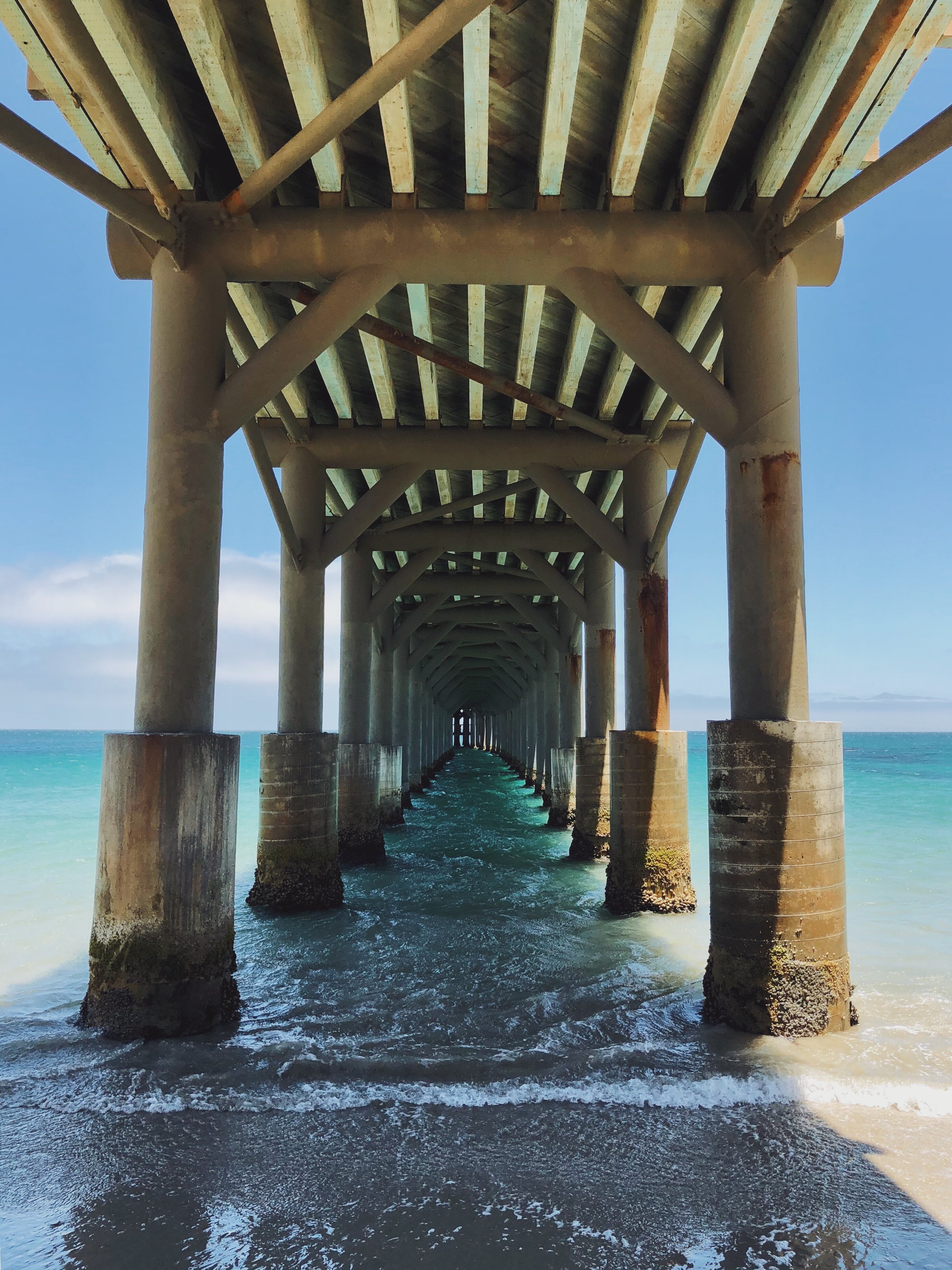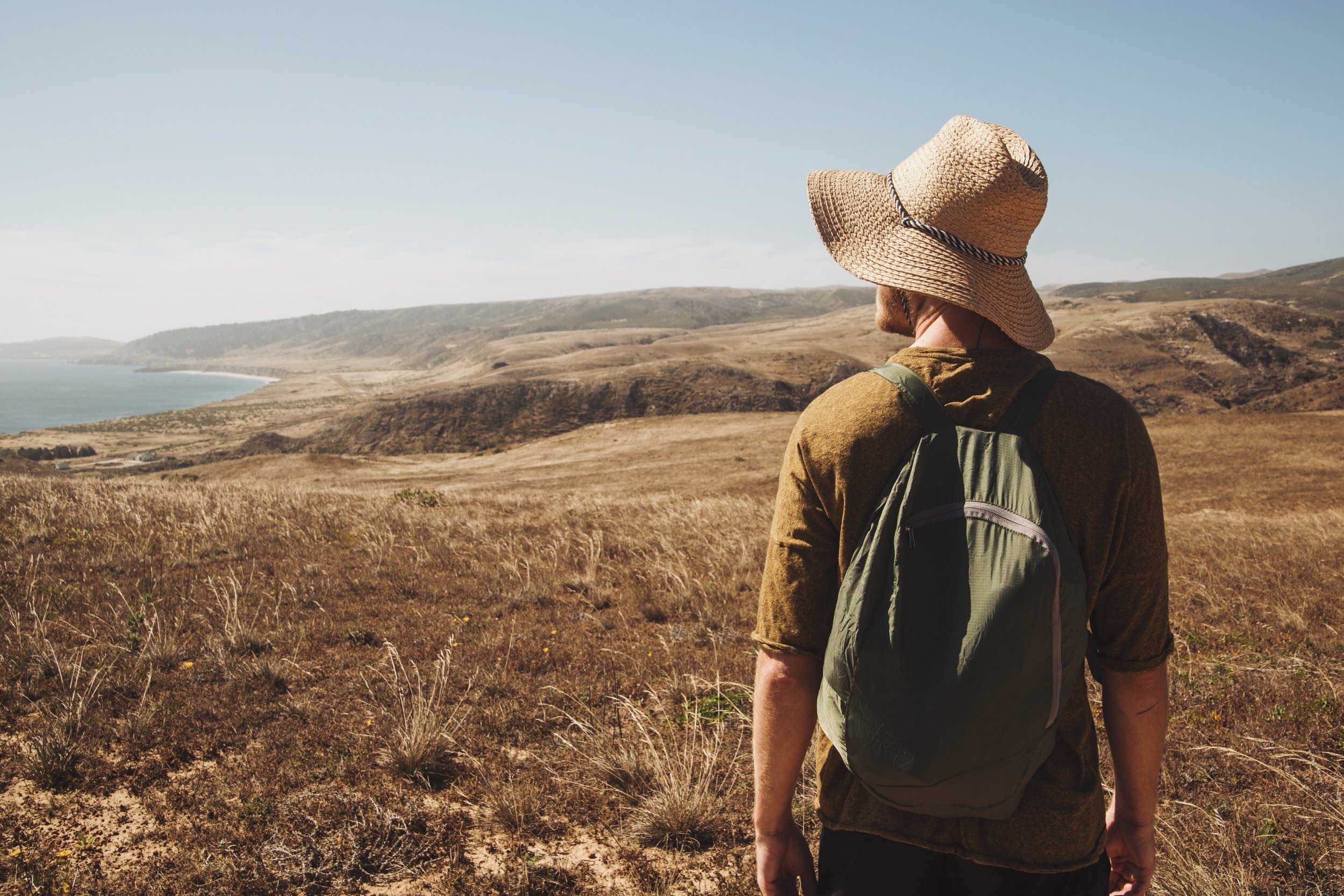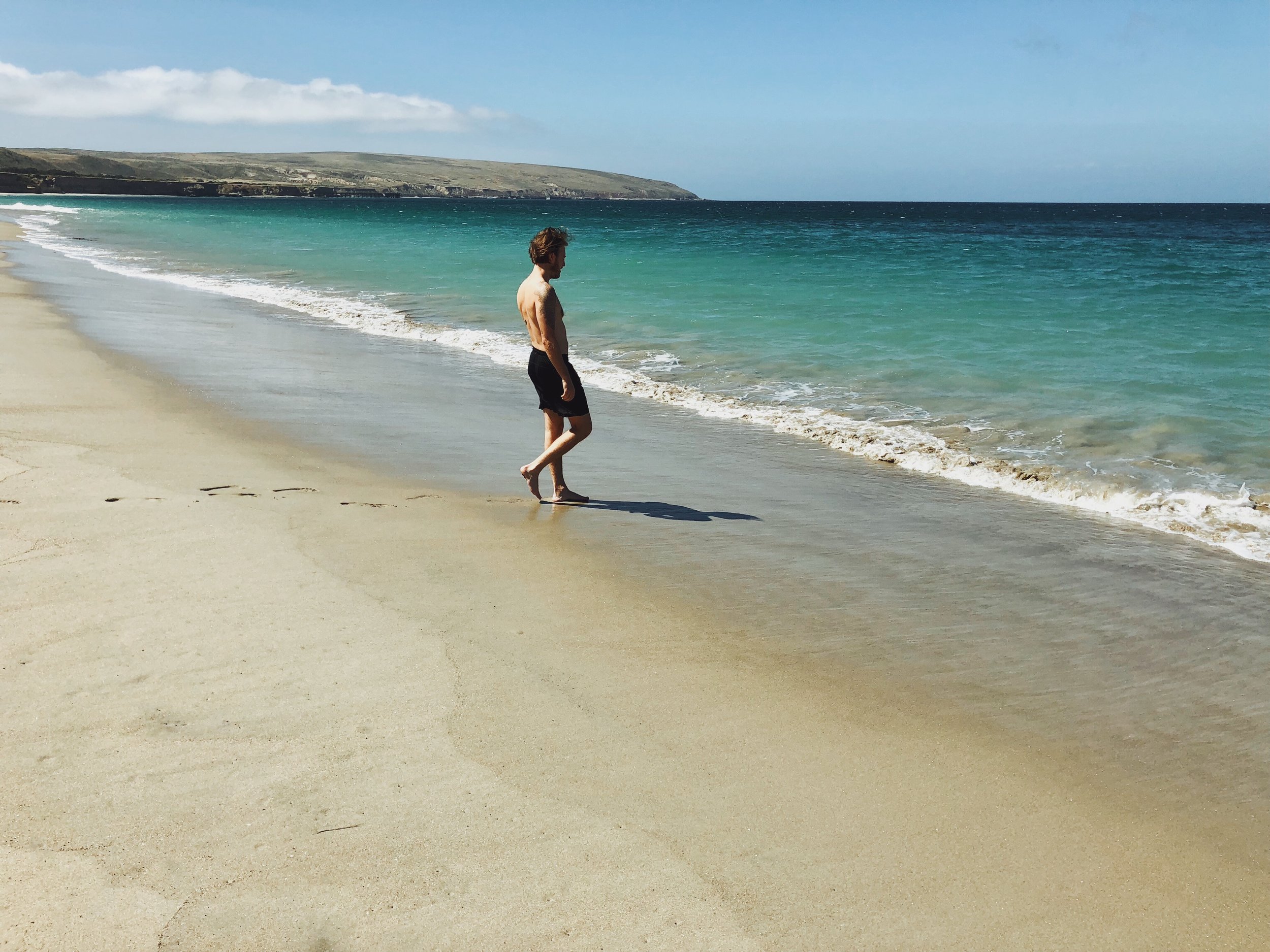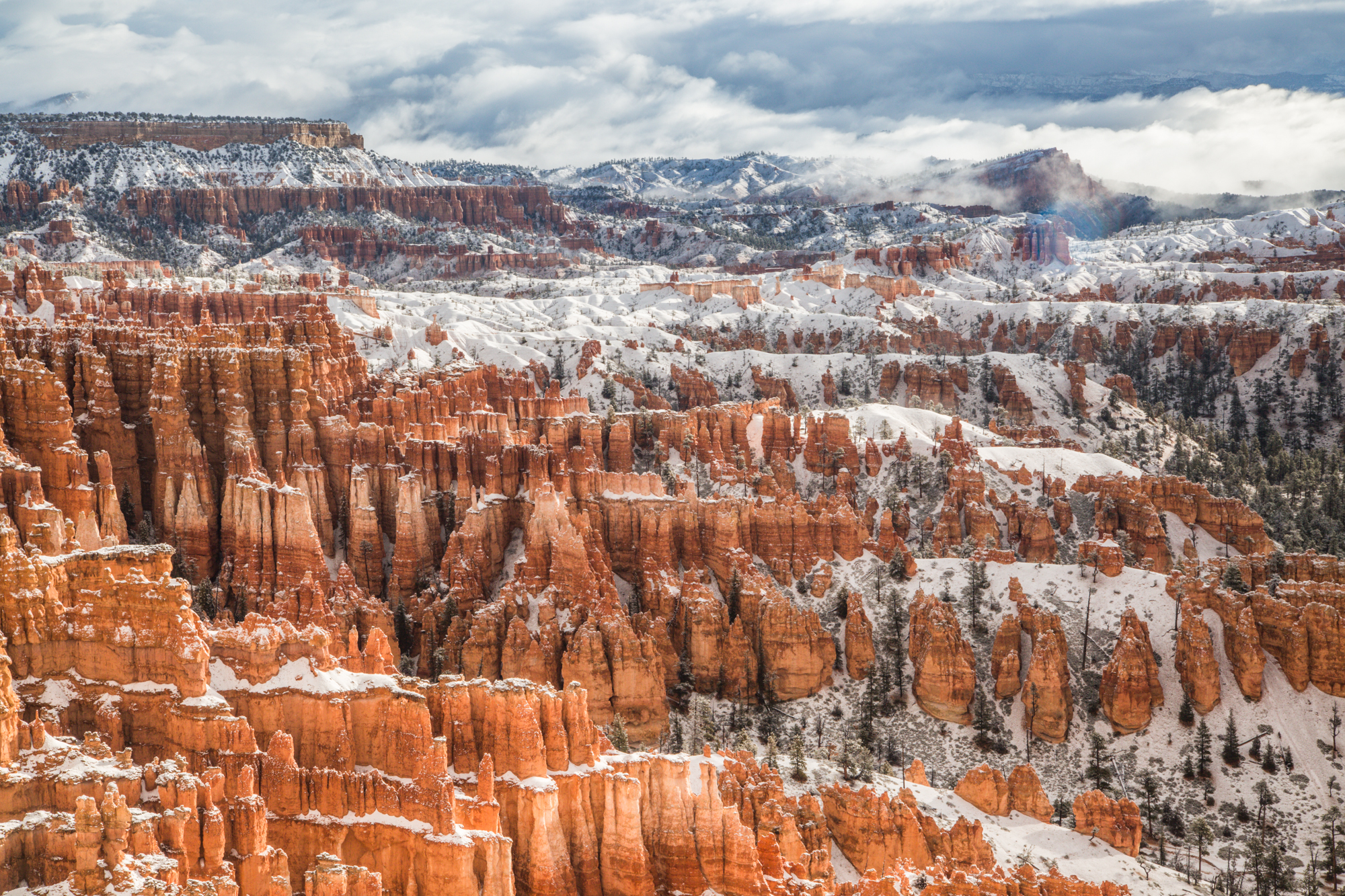YELLOWSTONE | Fall
Laurel Dailey
Human for scale at Mammoth Hot Springs.
The first time I visited Yellowstone National Park as an adult some years ago, it was on July 4th, stultifyingly hot, choked with fellow tourists. The steam was steamier, the dust, dustier. It was more peopled than it had any right to be, terra firma buckling under the weight of tour busses. It was also a case study in how relative solitude influences a person’s experience of the landscape. Is a geyser more or less stunning if you bear witness among hundreds?
The land atop this massive caldera in the western United States has borne witness to its fair share of human confluence. It’s said that when American explorers caught their first glimpses of Yellowstone, their accounts were largely disbelieved. Fraught with inconsistencies, their claims of subterranean upheaval—hissing fumaroles, gurgling mudpots, spitting geysers—were the stuff of biblical hellscapes, certainly at odds with the (perceived) natural world.
But the land was far from mythic, and far from uninhabited. Twenty-six tribes have ancestral connections to Yellowstone National Park, dating back 11,000 years. The Crow refer to the area as “land of vapors,” the Kiowa, “the place of hot water.” It is home to a dazzling array of flora and fauna, down to the microbial life found in its boiling pools. It is also a study in contrasts, which were blunted by the crowds when I visited so many Julys ago.
Mammoth Hot Springs area.
A transitional season like fall is a fitting bracket within which to experience Yellowstone (the park also happens to be far less crowded in October than it is in July). It’s restless earth—a roiling, shifting dreamscape—disquietingly active, every moment marked by change. In the fall, as below, so above: the weather shifts on a dime. For example, my sister visited Yellowstone just two days after I did under a sunny, cloudless sky. Yet my time there was observed by brooding cloud cover and fitful bursts of rain and snow.
To that end, I was delighted to observe that while summer’s warm colors gradually leach from the grounds surrounding, Yellowstone’s springs remain unwaveringly radiant in contrast—with shades ranging from pale aquamarine to deep emerald to vivid azure. The effect of this juxtaposition only heightened Yellowstone’s otherworldliness. (I’ll note here the singular exception at Midway Geyser Basin. Ever superlative, Grand Prismatic Spring wore a crown of steam so dense one could only perceive its colors from their reflection on the skyborn water droplets. It was a grand, prismatic disappointment.)
As though fall needs further endorsement, Yellowstone’s animals are known to be more present as the weather cools, coming down from the higher elevations to graze or prepare for hibernation. We drove along Grand Loop Road, vigilantly inspecting wide plains and phalanxes of lodgepole pine for signs of wildlife. Our endeavor was ultimately redundant as we approached a lone bison on the road’s shoulder, indifferent to our passing. At Mammoth Hot Springs, elk mingled with wayfinding signage, further blurring the boundary between nature and infrastructure.
Blue Pool at West Thumb Geyser Basin.
To be present in Yellowstone is to observe the startling fragility of our status quo. If that supervolcano should decide to blow, the United States would effectively be obliterated. While the chances of that happening anytime soon are comfortingly slim, wandering among the steam vents certainly brings the possibility to mind.


